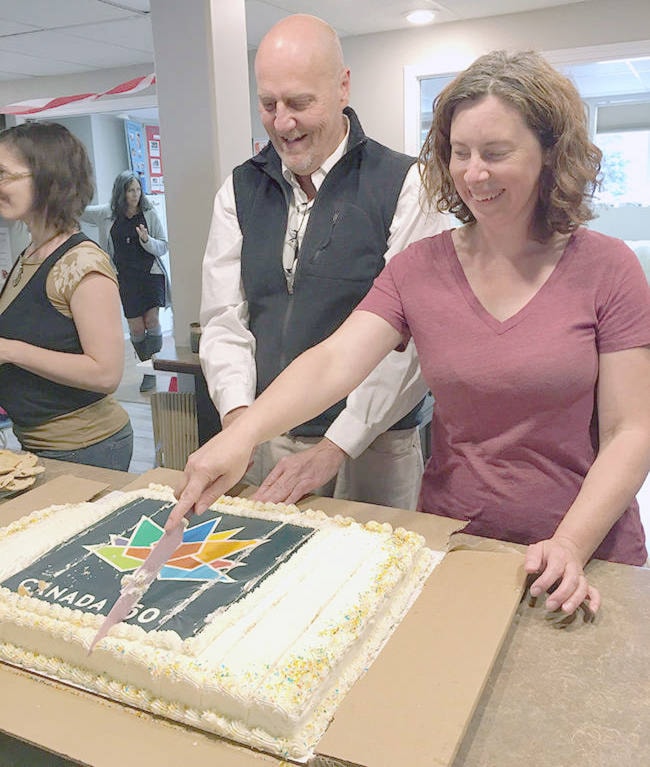KIMBERLEY — Communities in the Basin are exploring how technology can help build community connections, and Castlegar is among them.
Jim Fisher, executive director of Kootenay Family Place (KFP), shared a program called Better Impact Volunteer Software at the Technology for Community Connections breakout session at the Columbia Basin Trust’s SHIFT! Thriving in Change symposium that was held in Kimberley over the weekend.
Fisher explained that the software allows KFP to receive applications from volunteers, accept volunteers and assign them volunteer hours. It also allows the volunteers to manage their own volunteer hours.
“This is a dynamite little program and it allows us to corral groups of volunteers together and communicate with them via email in a — not a cold way — a very friendly way,” said Fisher.
Christopher Horsethief of the Ktunaxa Nation has also been using technology to help his community.
Horsethief has a PhD from the Gonzaga University’s Doctoral Program in Leadership Studies and “is a social network analyst and organizational theory consultant specializing in complex social processes, collective intelligence, and post-traumatic community resilience.”
Along with his family, he coded a number of Indigenous language keyboards, which gave those nations a tool to use in their language revitalization efforts.
He’s also used a 3-D printer to create toys with Indigenous words on them to help reinforce learning and has created simple computer games for First Nations to help in language learning.
The session also included a presentation from Robert Bell, who “heads research, analysis and content development activities and directs the multi-stage analysis of communities for the annual Intelligent Community Awards program.”
He gave four examples of communities that have used technology to solve problems.
Melbourne, Australia, created an app called Ask Izzy that helps people who are homeless connect with services, such as housing, food, and support and counselling, and a community in Mexico gave cell phones to taxi drivers in exchange for phoning in crime tips.
In Whittlesea, Australia, the city economic development department surveyed business owners and scored them on their digital readiness.
“But then they go one step further. Now that they have a couple hundred of these surveys in-house, they’ll give you a comparative score about how you do compared to your peers,” said Bell.
Businesses who wanted to get competitive and up their game also then had access to training services.
And finally, Bell used the example of the Nelson Tech Club (tech-club.info), which hosts a dedicated hackerspace every Wednesday, open to kids as young as six.
